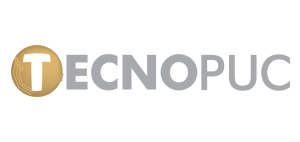Title:
Inspiring Solutions
Subtitle:
Light and Fast Innovation Ecosystem

By TECNOPUC - Parque Científico e Tecnológico da PUCRS, Year 2018 Finalist, located in Brazil
Keywords: management
Launch date:
01 January 2018
Describe your solution in 50 words or less
We proposed an innovative new management structure for managing an innovation ecosystem based on a distributed organization. Teams are organized as a network of nodes. Each node has a leader and the mindset to make this work includes autonomy, responsibility, empowerment, transparency and coordination of all team members.
What is the purpose of your solution
The world has changed, but the hierarchical organizational structures of the industrial age has not changed at the same level. The anachronistic VUCA (volatility, uncertainty, complexity and ambiguity), despite its military origin, is suitable to characterize the current dominant environment of many industries. Connected to this reality there are several cases of organizations that emerge successfully supported by flexible structures. On the other hand, many others traditional organizations are reinventing themselves, moving the bureaucratic structures for lighter and faster models. Over the last 15 years, the Scientific and Technological Park Tecnopuc was consolidated following the evolution of the business dynamics into a virtuous interaction of the triad University, companies and government. As a result of the growth process, until 2017 Tecnopuc""s innovation ecosystem was organized by specialized departments focused, for example, on business incubation and intellectual property and technology transfer. Supported by the mission of being an ecosystem of innovation and transformation vector of the University and society, during the review of its strategic plan for the next decades, one question regarding the VUCA world stood out. Is the consolidated organizational structure, that led Tecnopuc to be a benchmark, proper to meet the challenges of the coming years? Got evidence that the answer was no. Inspired by the comparison between alpinism and expedition, proposed by consultant Patrick Hollingworth in the book Light and Fast, Tecnopuc assumed as part of its central strategy the need of updating the organizational structure into a distributed model. The model adopted jointed all the departments related to the ecosystem of innovation in one single structure, organized in nodes. Instead of a formal Directive structure, that would lead and assume final decisions, it was created an Orchestration node responsible to assure the proper communication and sharing between the other 6 nodes: Projects Management, Startups, Laboratory of Creativity (CriaLab), Infrastructure Management, Prospecting and Negotiation, and Social Impact. The graph representing this structure is a web, in which each connection point forms a node, that assumes proper responsibilities, but are directly connected to each other
What is innovative about it
Over the last few decades, organizations have seen competition emerging from unexpected segments as they have observed entry barriers gradually decrease. Facing this scenario is one of the reasons that has led many organizations to establish interaction with innovation ecosystems all over the world, whether to create your business or reinvent it. The world business dynamics has been changing fast. It is critical for the sustainability of innovation ecosystems to be directly connected to the speed of this dynamics. Although innovation has always been at the heart of the operation, for years Tecnopuc was organized in a departmentalized structure. The pressure for rapid responses in uncertainty scenarios has put the model in check. Tecnopuc assumed that the solution to face the reality of VUCA world would not be external, it should start from an internal revision from the formal structure, as well as the mindset of all those involved. By proposing the adoption of a distributed model, with an environment of uncertainties as the center of the strategy, Tecnopuc has validated a replicable distributed management model that has the potential to connect with any other global ecosystem of innovation and contribute to create a large network of cooperation.
What impact has your solution had
The distributed organizational structure was proposed in 2017 as a result of the strategic planning of Tecnopuc. The methodology used to propose the new structure was Design Thinking, conducted with support from Tecnopuc""s creativity laboratory (Crialab). Over the course of 8 months, several data collection and analysis activities were carried out, discussions in large and small groups, aiming at proposing the new structure model. The model was evaluated in several instances and had its implementation started in 2018. The adoption of a distributed management model has, first of all, established the common being that the uncertainty environment is assumed as a source of opportunities identification, where solutions are not centralized in top management, but they need to be constantly co-created by the teams. Based on this approach, emerges the need to have teams sufficiently engaged in a core purpose, to enable a comfortable zone for taking decisions in complex scenarios. So, the implement of the model has been accompanied by the creation of a ""safety zone"" where teams need to feel empowered to make decisions with realities not previously foreseen. If in one hand the model suggests the reduction of bureaucratic processes, on the other it has substantially increased the demand for communication between peers. The model has demonstrated that the development of trust, respect and good communication became central in the node structure. Results indicate greater satisfaction of partners in the relationship with ecosystem management, as well as more agility and internal and external proximity. Results also indicate a better response time for interactions within the Tecnopuc community, including not only the management team, but all the interfaces with companies and researchers at the university.
Who are the main users
Although the implementation of Tecnopuc""s distributed organizational structure has focused on the internal reorganization of the 40 employees of the park, the impact of this change involves the entire ecosystem, since it optimizes the interaction of all actors, including established companies, startups, university, and other institutions.
Who runs it
As result of the distributed organizational structure adopted, the responsibility for the development and management of the model is shared among the 7 nodes that compose Tecnopuc.
For more solutions from IASP member TECNOPUC - Parque Científico e Tecnológico da PUCRS click here


/canvascolor(0xffffffff)/2017_08_04_ATV.png)
/canvascolor(0xffffffff)/KSU_MasterLogo_Colour_RGB_copy_2_6.png)
/canvascolor(0xffffffff)/sip_zurich_rgb_transparent_1.png)
/canvascolor(0xffffffff)/MemberLogo-5557-5966.jpg)
/canvascolor(0xffffffff)/2019_11_12_China_Tuspark_(Jiangsu).png)
/canvascolor(0xffffffff)/MemberLogo-87901-361401.png)
/canvascolor(0xffffffff)/DSP_logotyp_svart_png.png)
/canvascolor(0xffffffff)/logo_en_UNESCO_2nd_combination.png)
/canvascolor(0xffffffff)/1200px-Logo_Sophia_Antipolis_12.png)
/canvascolor(0xffffffff)/2017_06_08_Panama_Ciudad_del_saber.png)
/canvascolor(0xffffffff)/MemberLogo-5669-6104.jpg)
/canvascolor(0xffffffff)/JOIST_Innovation_Park_Logo_-_White_1.png)
/canvascolor(0xffffffff)/New_Logo_sapiens_(1)_page-0001.jpg)
/canvascolor(0xffffffff)/2024_05_24_Kenya_Tharaka_University.jpg)
/canvascolor(0xffffffff)/2024_09_26_Thailand_Northeastern_2.jpg)
/canvascolor(0xffffffff)/2017_11_17_Taiwan_Southern_Taiwan_SP.png)
/canvascolor(0xffffffff)/V_CLR_1_1.png)
/canvascolor(0xffffffff)/2017_11_03_Spain_PT_de_Asturias.jpg)
/canvascolor(0xffffffff)/Logo_ZEDE_Color_1.jpg)
/canvascolor(0xffffffff)/WMV_logo_PNG_2024-03-03_14_03_12_1.png)
/canvascolor(0xffffffff)/2017_07_31_tecnopuc.png)
/canvascolor(0xffffffff)/MemberLogo-41301-6054.gif)
/canvascolor(0xffffffff)/logo_46.png)
/canvascolor(0xffffffff)/PSP_Logo-mit-Schriftzug_1.jpg)
/canvascolor(0xffffffff)/MemberLogo-5826-6312.jpg)
